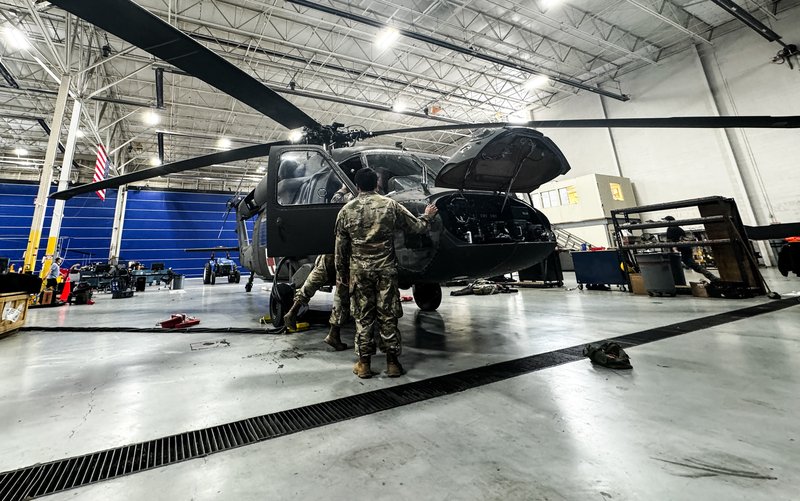Safer skies? How US Army aviation training aims to fix the service’s accident rate problem
In mid-April the US Army implemented an ‘Army Aviation Safety Stand Up’, which is providing additional training for rotary-wing pilots and maintainers as the service gets to grips with the root causes of a slew of recent major accidents.
Announced on 10 April and implemented with immediate effect, the additional training is designed to address what one senior service leader described as ‘a troubling trend with our accident rates’ during the first six months of the current fiscal year, which began on 1 October... Continues below
Newsletter Sponsors:

Above: The US Army hopes additional training for both flight and maintenance crews will put a stop to the service’s recent poor accident record. (Photo: Army National Guard)
During a briefing on the additional training, MG Walter Rugen, Director, Army Aviation in the Office of the Deputy Chief of Staff, G-3/5/7, explained that the ‘stand up’ approach adopted is different from more traditional safety ‘stand down’ training in that there will be no accompanying pause in operations.
‘During this stand up, aviation units will execute targeted training that we've really been deliberate about crafting while continuing to fly missions. Again [our] overarching goal [is] to build enduring readiness and proficiency in our force,’ he said.

MVRsimulation VRSG: Train as you fight in the virtual environment. Watch the video: Recreating a live Special Operations Forces exercise in a mixed-reality training environment.
‘Many of you may have remembered from last year that the army executed an Aviation Stand Down where units did pause all operations to focus on safety trends across the force. We assess that the recent accident increase would be better mitigated by focusing more on specific training topics to better get at targeted areas that are contributing to many of our safety issues.’
According to BG Jon Byrom, Commanding General, US Army Combat Readiness Center, the Army has already recorded 12 aviation flight mishaps in the first half of FY24, versus a total of nine aviation recorded in all of FY23. He went on to define the ‘Class A mishaps’ as involving ‘either a fatality or loss of equipment value in excess of $2.5 million.’
Significantly, FY24 aviation mishaps have involved ten fatalities.
Rugen emphasized that ‘any loss of life is 100% unacceptable’, adding, ‘and then obviously, even when we have accidents [where] we lose the aircraft or severely damage the aircraft, we consider that unacceptable, too. So, we understand we're in an inherently dangerous business, but getting after those trends and changing them to the better is always where we want to be.’

Actions conducted during the training stand up encompass: academic instruction on power management and spatial disorientation; training on the background and requirements of the new Risk Common Operating Picture; and technical proficiency training for maintainer specialists in accordance with the Aviation Maintenance Training Program.
The army’s active-duty component had 30 days to complete the training (by 10 May) with reserve components having 60 days.
Commanders will be keeping a close eye on accident rates for the rest of FY24. Observers will then be able to tell whether ‘standing up’ and the specific measures taken on the ground and in the air have had the desired effect. If not, more fundamental action may be needed if army aviation is to function safely and effectively
Other articles in this newsletter:
An assault on courses? Why the US Army is cutting back distributed learning
How US marines and sailors are training for humanitarian assistance
Don't want to miss out on future Decisive Edge content? Make sure you are signed up to our email newsletters.












